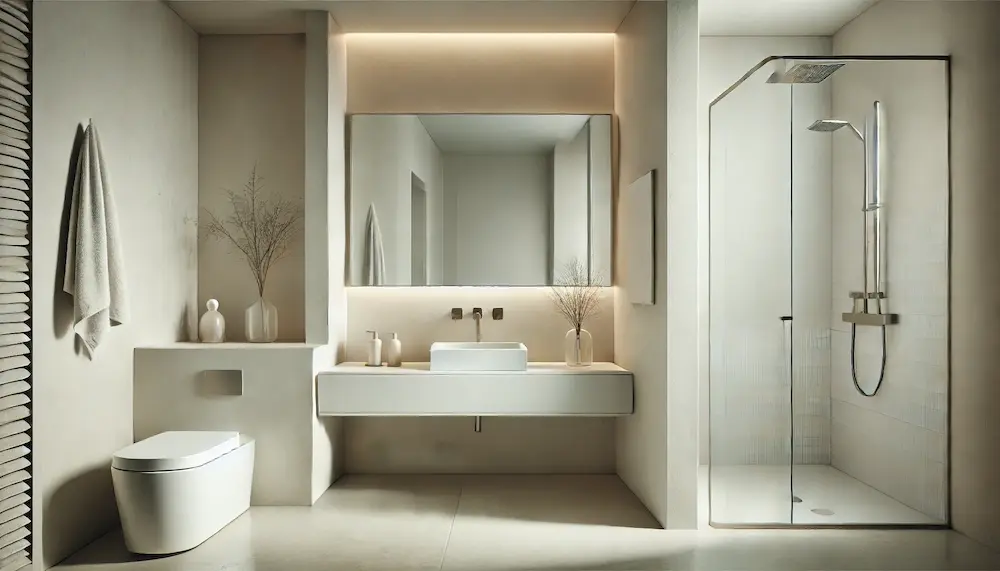Minimalist bathroom design emphasizes simplicity, functionality, and tranquility, creating spaces that are both aesthetically pleasing and practical. This article explores the history, key features, applications, considerations, and future trends of minimalist bathrooms.
Introduction to Minimalist Bathrooms
Minimalist bathrooms focus on clean lines, uncluttered spaces, and a neutral color palette to foster a serene environment. By eliminating unnecessary elements and emphasizing essential fixtures, these designs create a sense of openness and calm. Natural materials like wood and stone are often incorporated to add warmth and texture, enhancing the overall aesthetic.
History and Origins of Minimalist Bathrooms
The minimalist design movement emerged in the mid-20th century, influenced by architectural styles such as Bauhaus and De Stijl, which emphasized functionality and simplicity. In bathroom design, this translated to the use of basic geometric shapes, neutral color schemes, and the elimination of superfluous ornamentation. Over time, minimalist bathrooms have evolved to incorporate modern materials and technologies while maintaining their core principles of simplicity and efficiency.
Key Features of Minimalist Bathrooms
- Neutral Color Palette: Utilizing shades of white, gray, and beige to create a calm and cohesive look.
- Streamlined Fixtures: Incorporating wall-mounted sinks, floating vanities, and frameless mirrors to enhance the sense of space.
- Natural Materials: Using wood, stone, and concrete to add texture and warmth.
- Clutter-Free Surfaces: Employing hidden storage solutions to maintain an organized and tidy appearance.
- Abundant Natural Light: Maximizing natural light through large windows or skylights to enhance the open and airy feel.
Applications of Minimalist Bathrooms
Minimalist bathroom designs are versatile and can be applied in various contexts:
- Residential Homes: Homeowners adopt minimalist designs to create tranquil and clutter-free personal spaces.
- Hospitality Industry: Hotels and resorts incorporate minimalist bathrooms to offer guests a serene and luxurious experience.
- Commercial Spaces: Office buildings and public facilities utilize minimalist designs for their clean and efficient layouts.
Considerations When Choosing Minimalist Bathroom Designs
When planning a minimalist bathroom, consider the following:
- Space Utilization: Optimize the layout to ensure functionality, especially in smaller bathrooms. Features like floating vanities and wall-mounted toilets can save space.
- Material Selection: Choose durable and water-resistant materials that align with the desired aesthetic. Natural stones and high-quality ceramics are popular choices.
- Storage Solutions: Incorporate hidden or built-in storage to maintain clutter-free surfaces. Recessed shelving and wall-mounted cabinets are effective options.
- Lighting: Ensure adequate natural and artificial lighting to enhance the open and airy feel. Consider installing dimmable lights to adjust the ambiance as needed.
- Budget Constraints: While minimalist designs can be luxurious, it’s important to balance aesthetics with affordability. Invest in quality fixtures where it matters most, such as plumbing and waterproofing, to prevent future issues.
Conclusion
Minimalist bathrooms offer a harmonious blend of simplicity, functionality, and elegance. By focusing on essential elements and thoughtful design, they create serene spaces that cater to modern living needs. Whether in residential or commercial settings, minimalist bathroom designs continue to be a timeless choice for those seeking tranquility and efficiency in their spaces.
